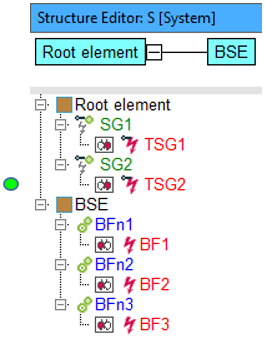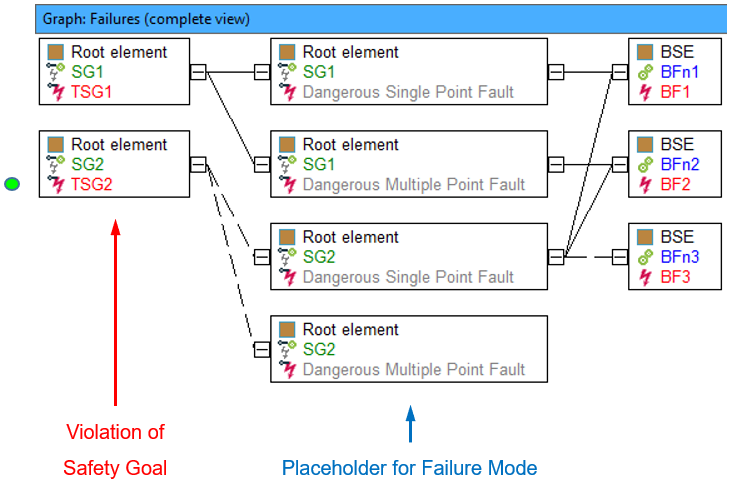Search for:
Single or multiple point failures without causes
Explanation:
Violations of safety goals will be searched for, the single point faults and/or multiple point faults of which are not linked to any cause.
Example:
Abbreviations:

- The shown sample structure consists of two structure elements. Two safety goals
 each with one violation of safety goal
each with one violation of safety goal  are assigned to the root element. The second structure element BSE has three functions with a base failure each.
are assigned to the root element. The second structure element BSE has three functions with a base failure each. - The following failure graph represents how the base failures BF are linked to the violations of safety goals.

- Two placeholders for the failure type are automatically assigned in the IQ Software to a violation of safety goal. This is shown in the failure graph and the failure net. If you anchor a violation of safety goal in the failure graph or the failure net these placeholders for failure types are automatically shown next to the violation of safety goal in the direction of causes. The failure types tell if the failures leading to a violation of safety goal according to ISO 26262 are single-point faults or multiple-point faults.
- The considered Quality Rule (QR) detects violations of safety goals having single-point faults or multiple-point faults that are not linked with a failure cause. As single-point faults and multiple-point faults of safety goals are only visible in the failure graph and the failure net you have to use the Graph Editor or the Net editor to see which single-point faults and/or multiple-point faults are responsible for the search result. In our sample case, analyzing the above failure graph produces the following search result:
Search result: 
The violation of safety goal TSG2 is marked as a hit because its multiple-point fault does not have a failure cause.


